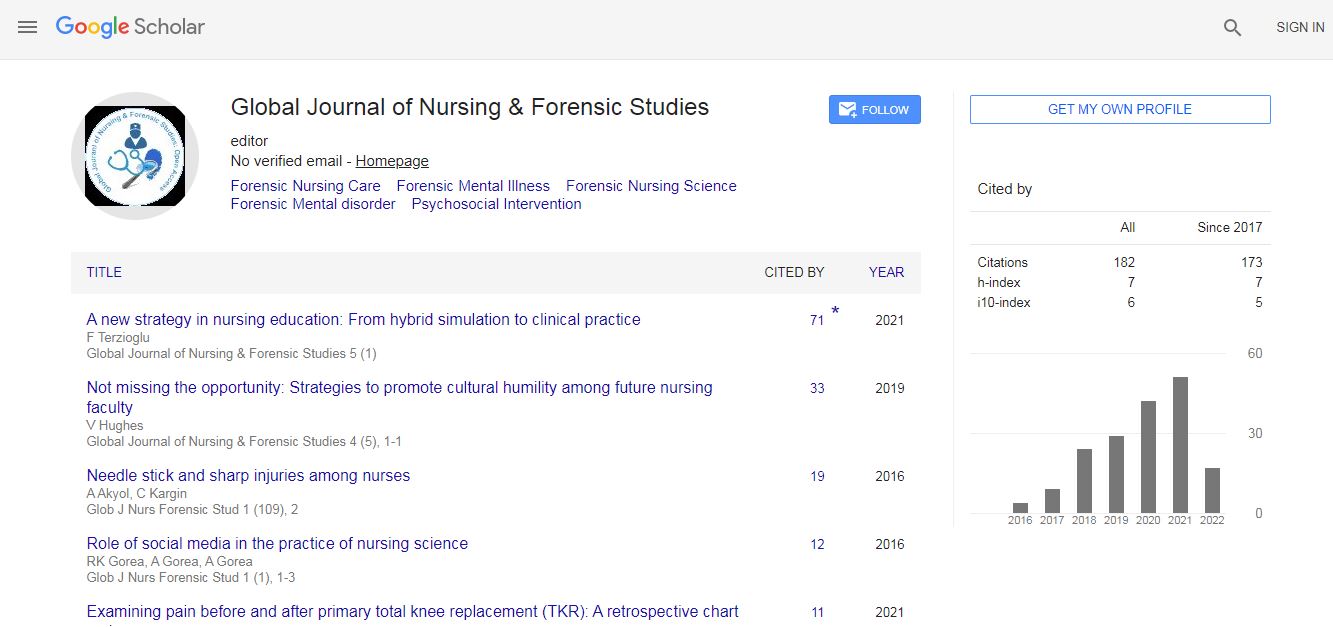Our Group organises 3000+ Global Conferenceseries Events every year across USA, Europe & Asia with support from 1000 more scientific Societies and Publishes 700+ Open Access Journals which contains over 50000 eminent personalities, reputed scientists as editorial board members.
Open Access Journals gaining more Readers and Citations
700 Journals and 15,000,000 Readers Each Journal is getting 25,000+ Readers
Google Scholar citation report
Citations : 82
Optometry: Open Access received 82 citations as per Google Scholar report
Indexed In
- Google Scholar
- RefSeek
- Hamdard University
- EBSCO A-Z
- Euro Pub
- ICMJE
Useful Links
Recommended Journals
Related Subjects
Share This Page
Retinopathy of prematurity incidence, risk factors and treatment modalities among premature infants at various neonatal intensive care units of central Karnataka in South India
11th Global Ophthalmologists Annual Meeting
Prakash V Suranagi, Ashutosh Patel, B S Prasad and Anand Vinekar
Thumbay Hospital , UAE
ScientificTracks Abstracts: Optom open access
Abstract
Statement of the Problem: Retinopathy of prematurity (ROP) is a potentially blinding eye disorder of childhood that primarily affects premature infants weighing 1250 grams or less/born before 31 weeks of gestation. ROP is a vaso-proliferative eye disorder characterized by abnormal vascular development of retina. Various other risk factors also contribute. The purpose of this study is to describe the incidence of ROP in various neonate intensive care units (NICU) and obtain information about risk factors associated with ROP and treatment modalities. Methodology & Theoretical Orientation: Premature infant born at 36 weeks of gestation or younger or 2000 grams or smaller were screened for ROP. 1350 babies were screened during October 2012 to March 2016. Screening was done with RETCAM and indirect ophthalmoscope using 28D volk lenses under topical anesthesia and those requiring treatment were given laser treatment. All the babies were followed up till 40 weeks of corrected gestation or until retina matured and further follow up continued for those with ROP until resolved. Findings: In 1350 premature neonates, ROP was detected in 248 infants. Most of the babies were in the range of 26-34 weeks of gestation age at birth. Total 74 infants had pre-threshold ROP, out of which 49 infants had Type-1 or high risk pre-threshold ROP and were given laser treatment. Remaining 25 infants had type-2 or low risk pre threshold ROP and were followed weekly. Conclusion & Significance: ROP is one of the important causes of ocular morbidities and childhood blindness. The magnitude of ROP in our study is 18.37%. Response to laser therapy is encouraging. Recommendation-Gestational age and low birth weight were the most significant risk factors for development of ROP, thus screening those with more than 1.5 kg and gestational age up to 36 weeks needs to be considered.Biography
Prakash Suranagi has a passion and specializes for screening and management of neonates with Retinopathy of Prematurity (ROP). He has a Fellowship in ROP from L V Prasad Eye Institute, Hyderabad, India (WHO collaborating center for prevention of blindness). He serves as Central Zone Karnataka Coordinator (Technical) for Karnataka Internet Diagnosis of Retinopathy of Prematurity (KIDROP) under National Rural Health Mission (NRHM) of India and Narayana Nethralaya Bangalore.

 Spanish
Spanish  Chinese
Chinese  Russian
Russian  German
German  French
French  Japanese
Japanese  Portuguese
Portuguese  Hindi
Hindi 